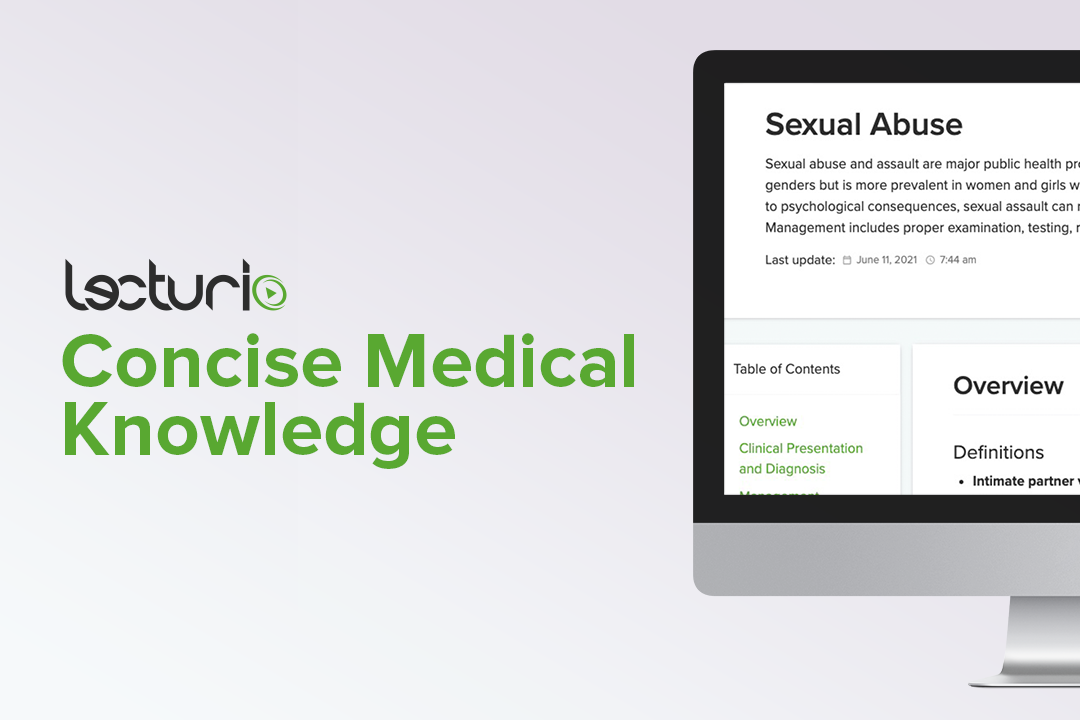Playlist
Show Playlist
Hide Playlist
Intimate Partner Violence
-
Slides Abuse.pdf
-
Review Sheet Intimate Partner Violence Nursing.pdf
-
Download Lecture Overview
00:01 Hello. I would like to discuss with you a very serious topic, intimate partner violence and sexual assault. 00:08 While I don’t think you’ll have many questions on your USLME, it’s important to note these things that I’m going to review just now. Let’s now talk about the patterns of assaultive behavior and coercive behavior. Women may actually not disclose that they have physical injury but they may sometimes tell you they have psychologic abuse, sexual assault, or progressive isolation from friends and family. This is typical in an abusive pattern that they may have from their intimate partner. Stalking is also common, deprivation of money and resources, and frank intimidation or talking down to the patient. Women may also experience reproductive coercion. 00:53 That essentially means is that they don't have the choice to have a child or not have a child. 01:00 Intimate partner violence is very common in the US. One in three women have experienced rape, physical violence, or stalking by an intimate partner during their lifetime. 01:11 In the US, 4.8 million women have actually reported incidence of physical or sexual assault annually. 01:19 The true prevalence though is unknown as many women are afraid to disclose their personal experiences of violence. Let’s now talk about reproductive coercion. 01:31 Approximately 20% of women seeking care in family planning clinics had a history of abuse and also experienced pregnancy coercion and 15% reported birth control sabotage. 01:43 Why do you think the partner would do that? Well, if you have more children, you might be more reliant on a partner. So, this is a form of abuse. Now, I’d like to discuss sexually transmitted infections. 01:58 Patients who have been exposed to intimate partner violence were more likely to respond by saying that STI notification would actually subject them to being accused by their partner of cheating. 02:09 So, they’re very, very fearful of disclosing the STI diagnosis to their partner. 02:15 Some women reported threats of harm or actual harm in response to notifying their partners about their sexually transmitted infection. I would now like to discuss special populations that are at risk for intimate partner violence. This is particularly true in the adolescent as she may not yet realize the normal boundaries and context of a healthy relationship. Therefore, it’s important to screen these patients for intimate partner violence. Another population are immigrant women. 02:46 These women may have their immigration status tied to their partner. Therefore, they’re less likely to report him or her if they’re subjected to abuse. Women with disabilities may rely on individuals who take care of them or assist them in their daily activities of living. Therefore, they're vulnerable to abuse not only from family members and friends but also caretakers. It’s important to screen them. 03:11 Older women similarly may also be subjected to abuse in care facilities, in hospitals, and at home. 03:19 So, remember to screen all women but especially these populations for intimate partner violence. 03:25 Let’s now review the important points of intimate partner violence screening. 03:31 We should always use language that does not convey judgment. Intimate partner violence can happen to anyone. It’s not restricted to certain socioeconomic classes, ethnicities, or countries. 03:43 Screen in private. You should not ask a patient if they feel safe if someone else is around. 03:48 They may feel uncomfortable disclosing in front of someone else. Use professional language with interpreters. 03:57 If a patient does not primarily speak English, do not assume that you can communicate well with them and employ an interpreter. Also, the interpreter should not be a family member or someone who knows the patient. Preferably, they should be employed by the hospital or by an agency that contracts with the hospital. You should clearly explain to the patient that screening is done universally and that you're not singling her out for any specific reason. 04:22 Confidentiality is very important and you should not discuss things with patients unless it’s germane to their care. However, remember that each state law may actually have specific disclosure recommendations. It’s really important to remember that intimate partner violence screening should occur at each point of care. This is helpful if you do it in the form of a questionnaire so patients think that it’s universally done. This can be done through intake forms. 04:51 There are different resources that you can provide to patients in the US. Here are some of the organizations and the contact information that you can actually give to patients that will assist women who may be trying to get out of relationships that are plagued by intimate partner violence.
About the Lecture
The lecture Intimate Partner Violence by Lynae Brayboy, MD is from the course Female Pelvic Medicine. It contains the following chapters:
- Sexual Assault
- Sexual Assault Screening
Included Quiz Questions
Which of the following population is most likely to be at risk for intimate partner violence?
- All options offered are correct
- Adolescents
- Immigrant women
- Women with disabilities
- Elderly women
Which of the following is inappropriate when conducting a screening for intimate partner violence?
- Use relatives as interpreters.
- Use language that does not convey judgment.
- Screen in a private and safe setting.
- Clearly state that screening is performed universally.
- Ensure confidentiality.
Which pattern of assaultive and coercive behavior is defined as the deprivation of the choice to have or not have a child?
- Reproductive coercion
- Physical injury
- Intimidation
- Progressive isolation
- Sexual assault
Customer reviews
5,0 of 5 stars
| 5 Stars |
|
5 |
| 4 Stars |
|
0 |
| 3 Stars |
|
0 |
| 2 Stars |
|
0 |
| 1 Star |
|
0 |




